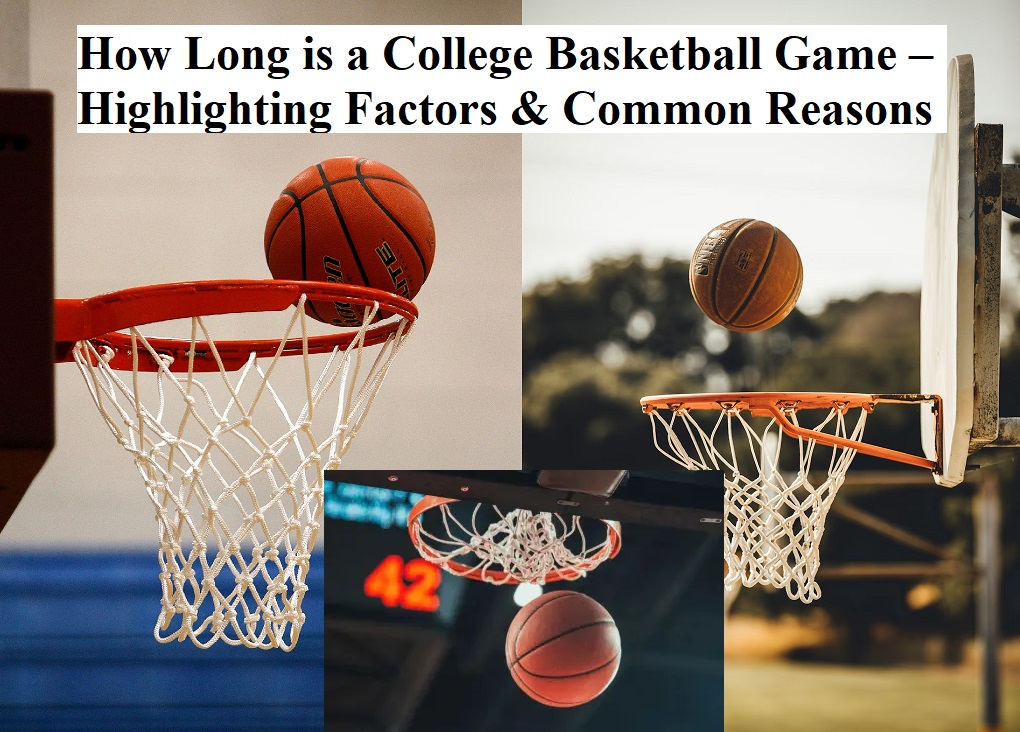College basketball games typically last around 2 hours. This duration includes the actual playtime, which is 40 minutes divided into two halves of 20 minutes each. The total time can vary due to several factors such as timeouts, fouls, and potential overtime periods. The structured playtime is 40 minutes, the actual game experience often stretches to about 2 hours due to these interruptions and breaks.
Breakdown of Game Duration
- Halves: Each half lasts 20 minutes.
- Halftime Break: There is a 15-minute halftime between the two halves.
- Timeouts: Each team is allowed a total of five timeouts, which can extend the game's duration. In televised games, additional media timeouts occur at specified intervals during each half.
- Overtime: If the game is tied at the end of regulation, it goes into overtime, which lasts for 5 minutes. Multiple overtimes can further increase the game's length.
What factors can cause a college basketball game to go overtime
In college basketball, each overtime period lasts for 5 minutes, and teams are allowed one additional timeout during this time Several factors can lead to a college basketball game going into overtime:-
Final Score Tie
The primary reason for overtime is that the score is tied at the end of regulation time. If both teams have the same score when the game clock expires, an overtime period is initiated to determine a winner. -
Fouls and Free Throws
Frequent fouls can lead to stoppages in play, and if a team is in the bonus situation, free throws can extend the game's duration. This may allow a team to score points that could tie the game, leading to overtime. -
Timeouts
Each team has a limited number of timeouts they can call during the game, which can be strategically used in crucial moments, especially towards the end of regulation. This can lead to delays and potentially allow teams to regroup and score, resulting in a tie. -
Momentum Shifts
A late rally by a team, such as hitting a last-second shot to tie the game, can create momentum that carries into overtime. This psychological factor may influence the outcome of the overtime period. -
Game Importance
High-stakes games, such as playoff matches or rivalry games, often see teams playing more aggressively, which can result in more fouls and strategic timeouts, increasing the likelihood of ties and subsequent overtime.
The Most Common Reasons for Overtime in College Basketball Games
Overtime in college basketball is primarily triggered by ties at the end of regulation, but several factors can contribute to this scenario.-
Tied Score at Regulation End
The most straightforward reason for overtime is that both teams have the same score when the game clock reaches zero. This necessitates playing an additional period to determine a winner. -
Late Game Scoring
Teams often score crucial points in the final moments of regulation, which can lead to a tie. This could involve last-second shots or free throws that keep the game competitive right up to the buzzer. -
Fouls Leading to Free Throws
Frequent fouls can result in free throw opportunities, which may allow a team to catch up or tie the game late in regulation. The stoppage of play during free throws can also extend the game's duration, increasing the chances of a tie. -
Strategic Timeouts
Coaches may call timeouts strategically in critical moments to regroup their teams, plan plays, or disrupt the opposing team's momentum. These timeouts can lead to scoring opportunities that might level the score before regulation ends. -
Game Importance and Pressure
In high-stakes games, such as tournament matches or rivalry contests, teams often play more aggressively, which can result in tighter scores and increased likelihood of ties as they fight for every point. -
Injuries and Delays
Injuries or other stoppages can disrupt the flow of the game, potentially allowing teams to regroup and score effectively towards the end of regulation, leading to ties.
